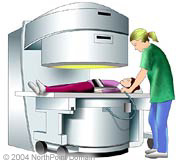X-ray Tests

Basic Facts
- X rays use electromagnetic energy and special film to produce a picture of internal human anatomy.
- X rays may identify abnormalities in bones and organs.
- X rays are among the most widely used, oldest, safest, and most convenient tests to help diagnose disease.
X ray tests show the body’s internal structure, and can diagnose or follow up on the following conditions:
- Urinary tract stones;
- Urinary obstructions;
- Prostate cancer;
- Urinary tract infections; or
- Benign (non-cancerous) masses in the urinary tract.
PRE-TEST GUIDELINES
The patient should remove metal objects such as jewelry and keys, and will wear a lead-lined x ray gown or remain dressed.
Women who are pregnant should notify their physicians.
WHAT TO EXPECT
The patient will stand in front of or lie down on a table under the x ray machine. Patients may be asked to take a deep breath and hold it during the x ray. X rays may be taken at different angles.
POST-TEST GUIDELINES
Patients can resume normal activities immediately following routine x rays.
Copyright © 2017 NorthPoint Domain, Inc. All rights reserved.
This material cannot be reproduced in digital or printed form without the express consent of NorthPoint Domain, Inc. Unauthorized copying or distribution of NorthPoint Domain’s Content is an infringement of the copyright holder’s rights.

